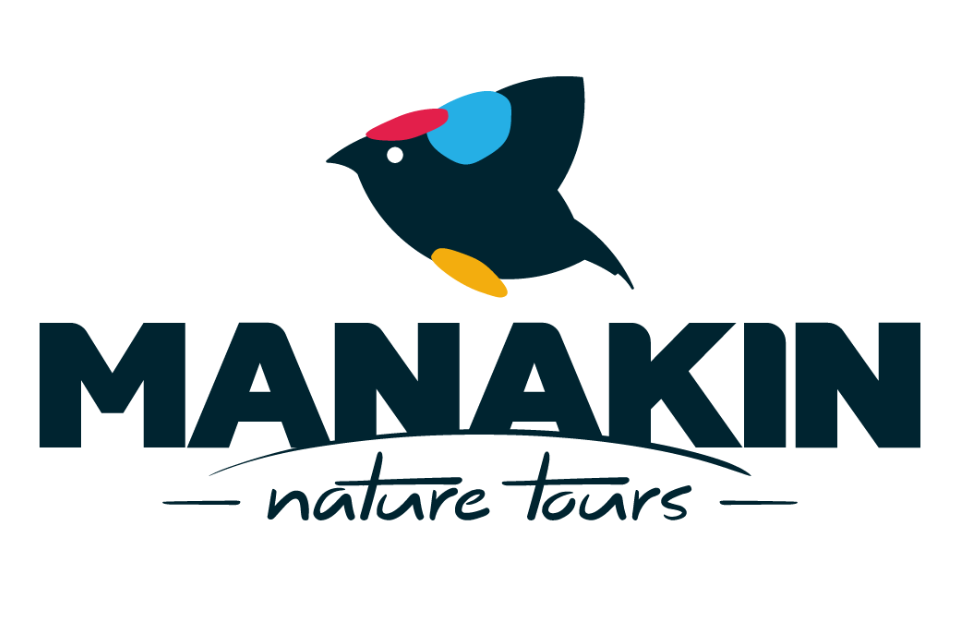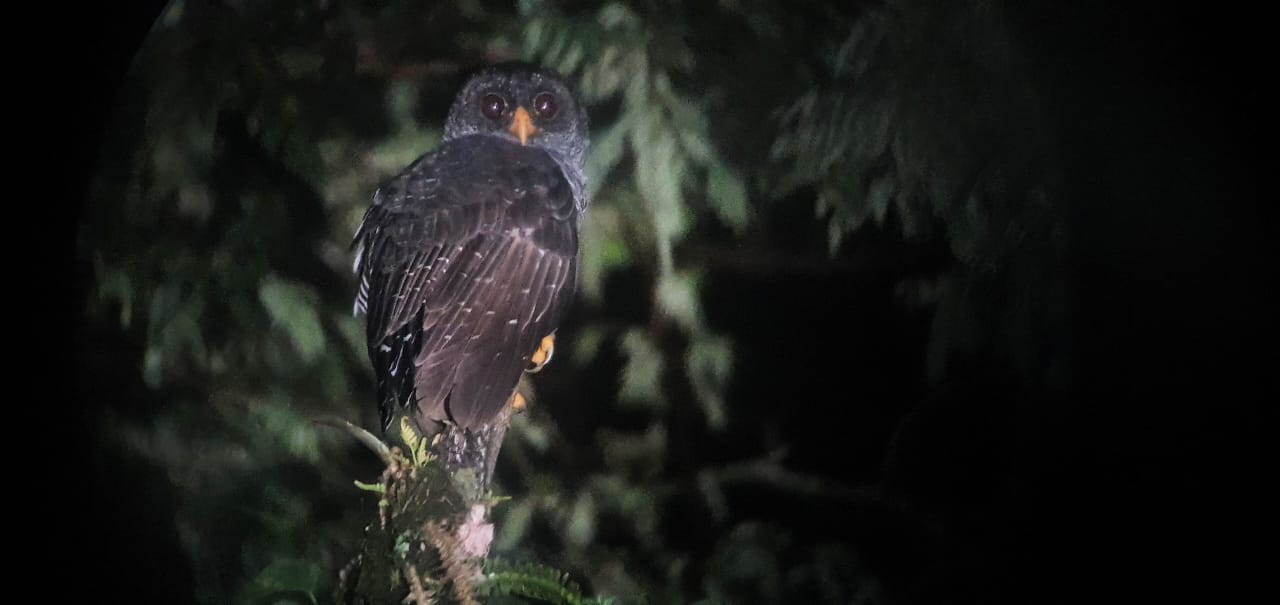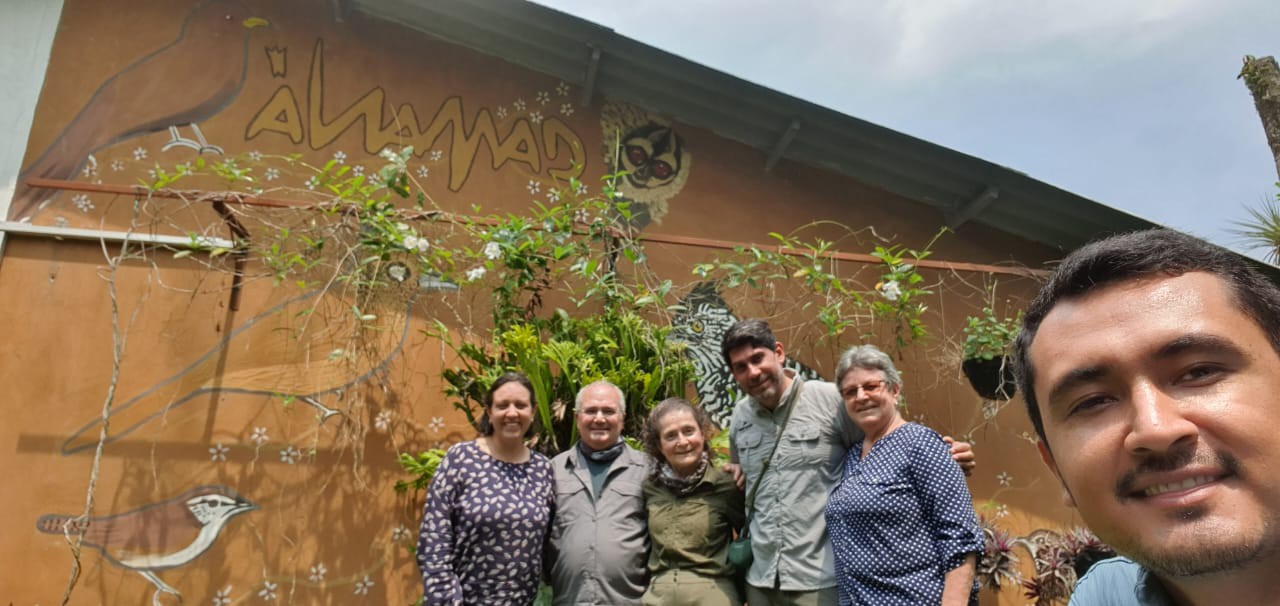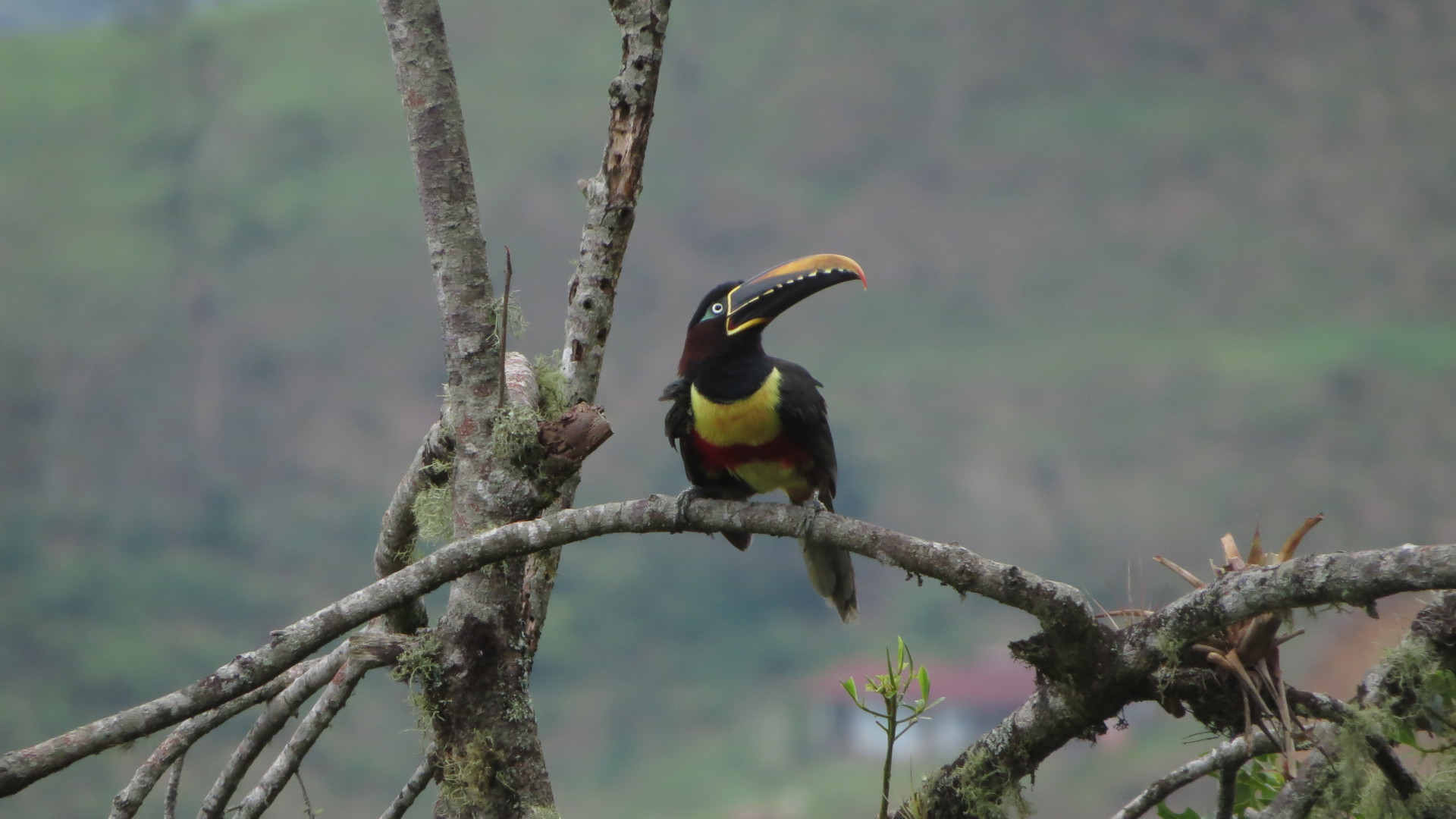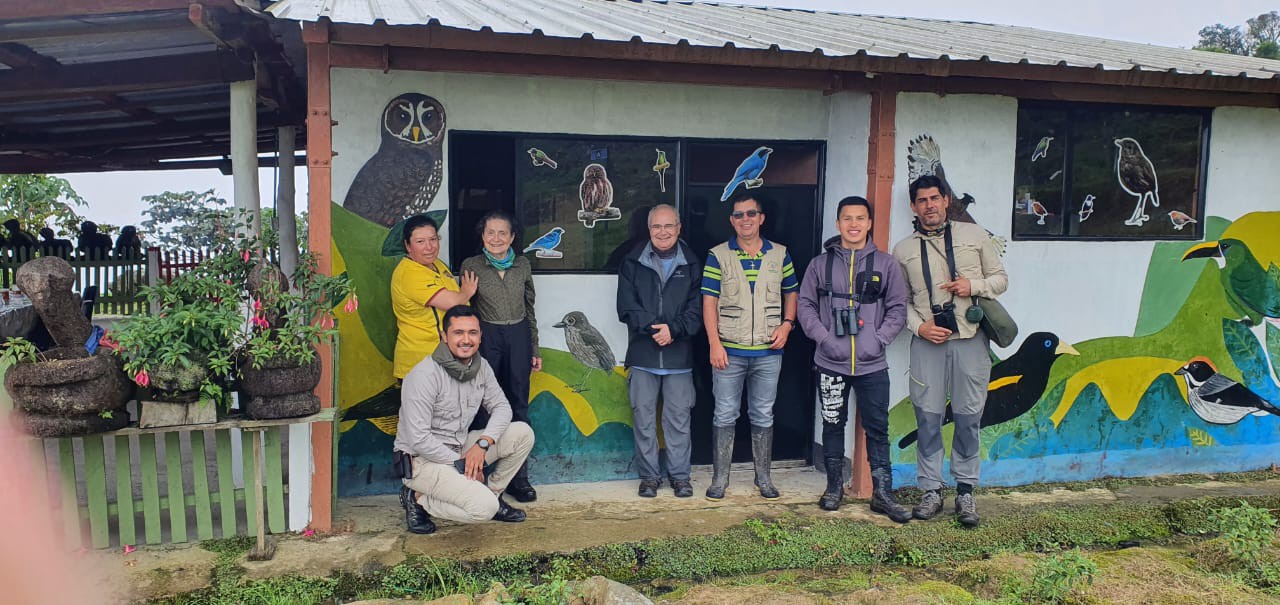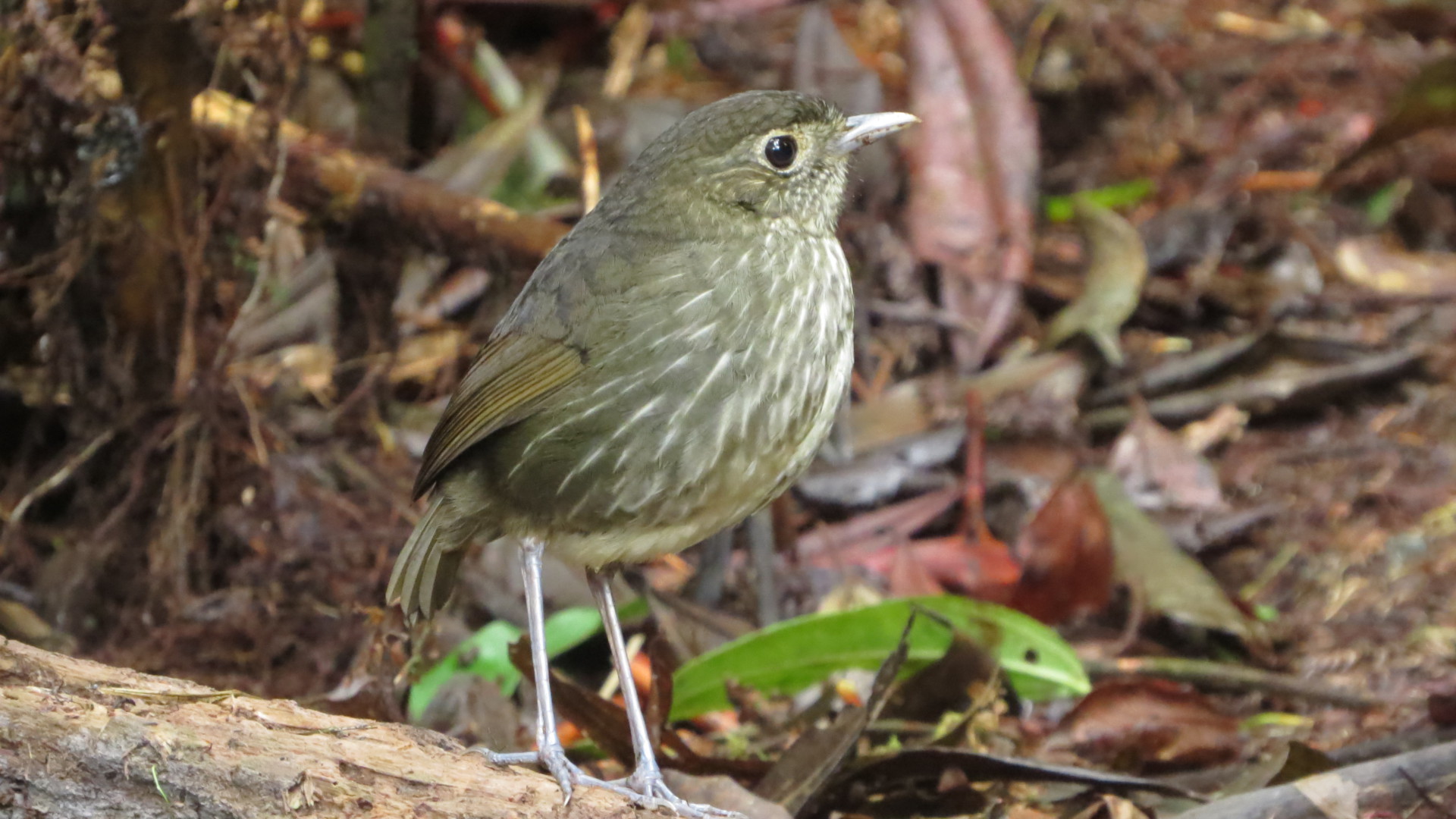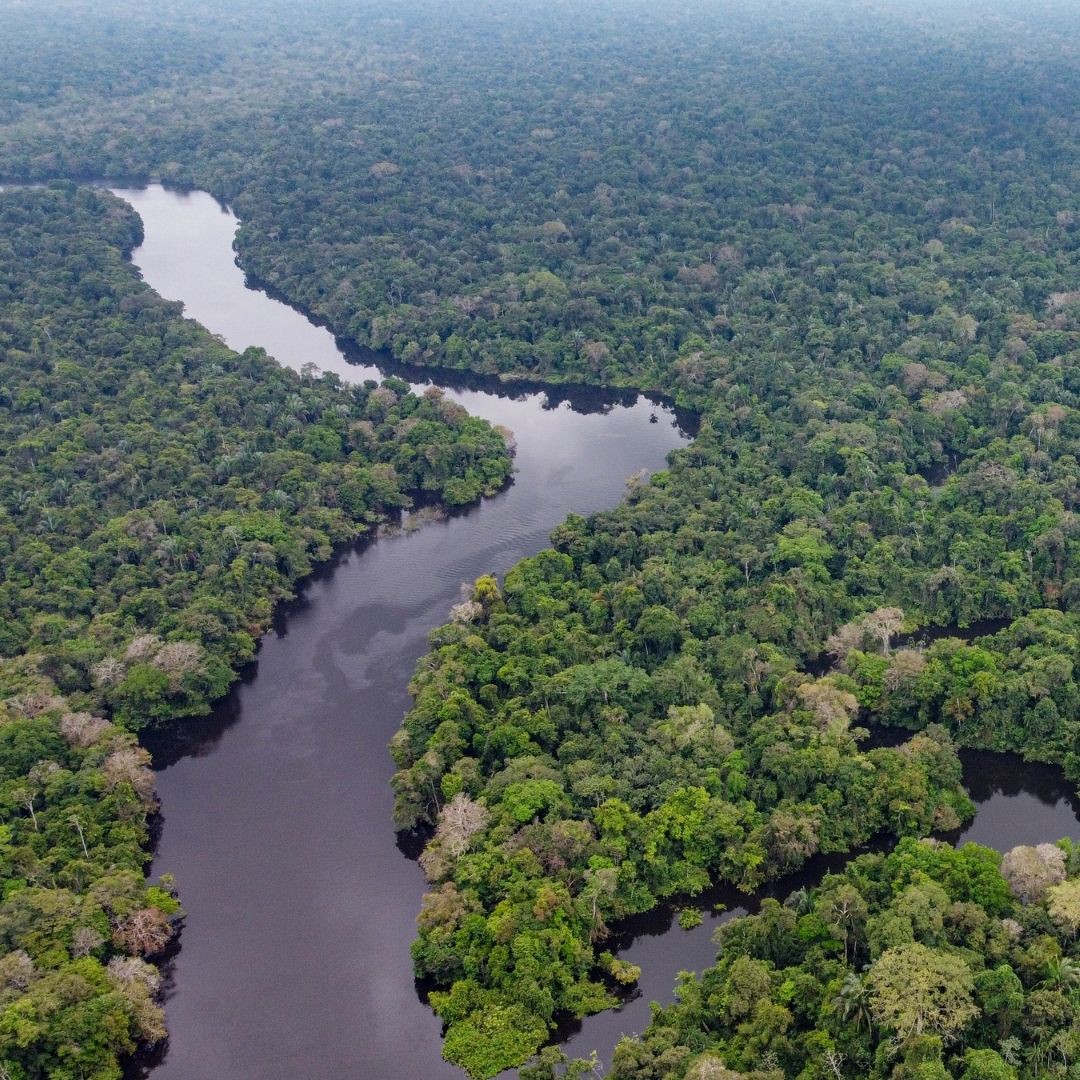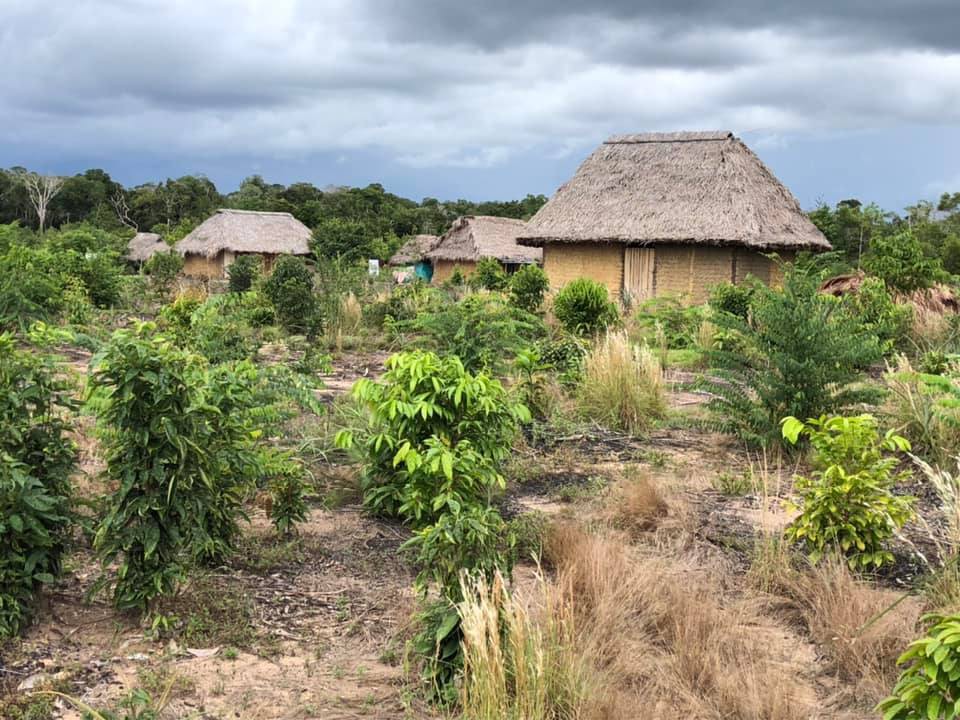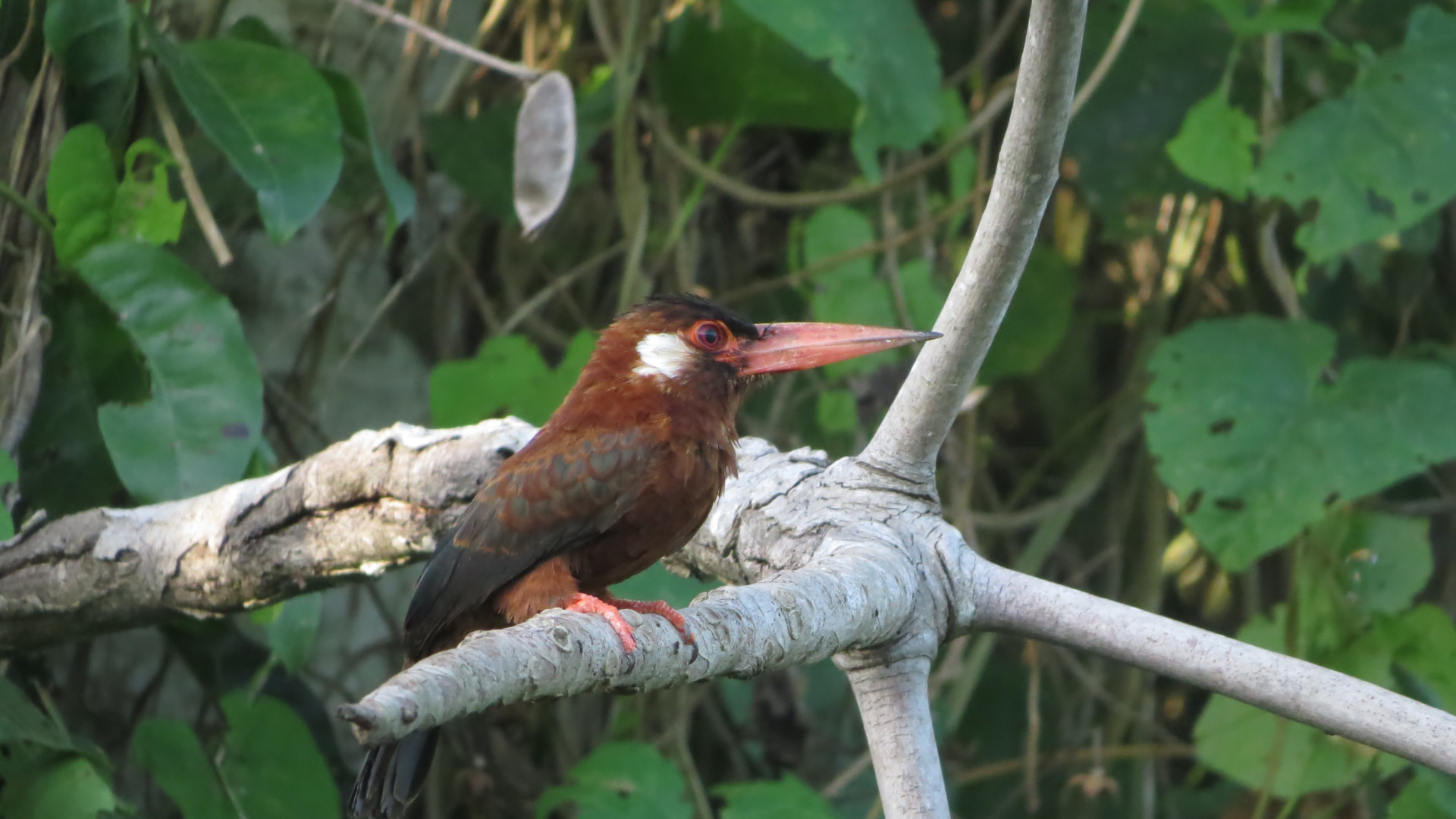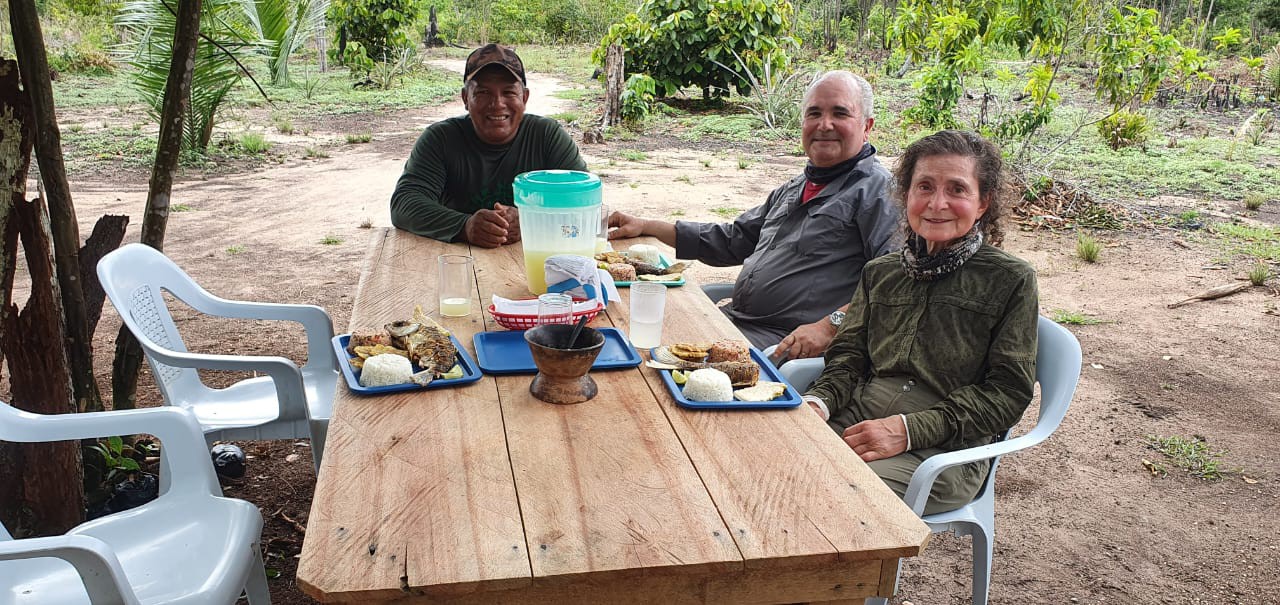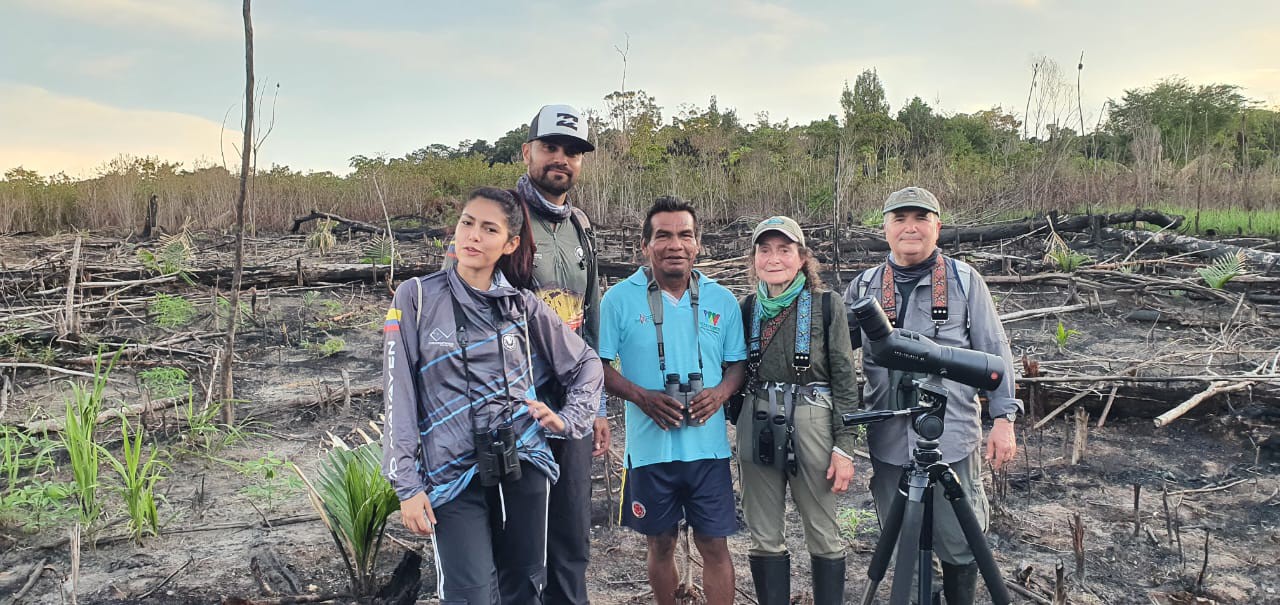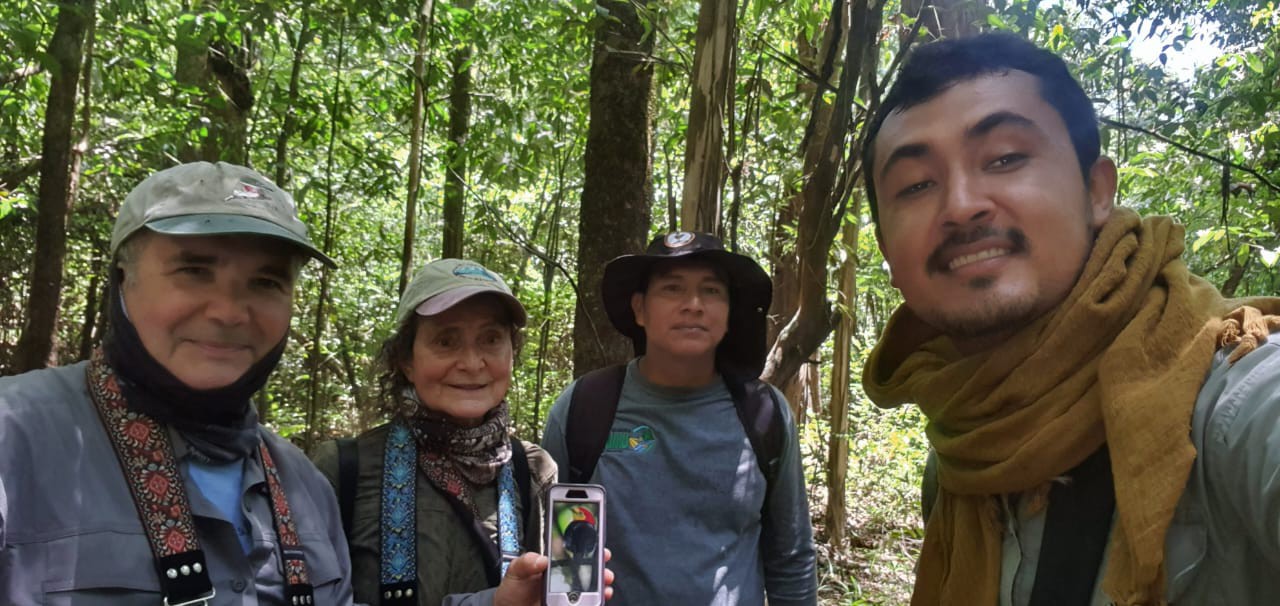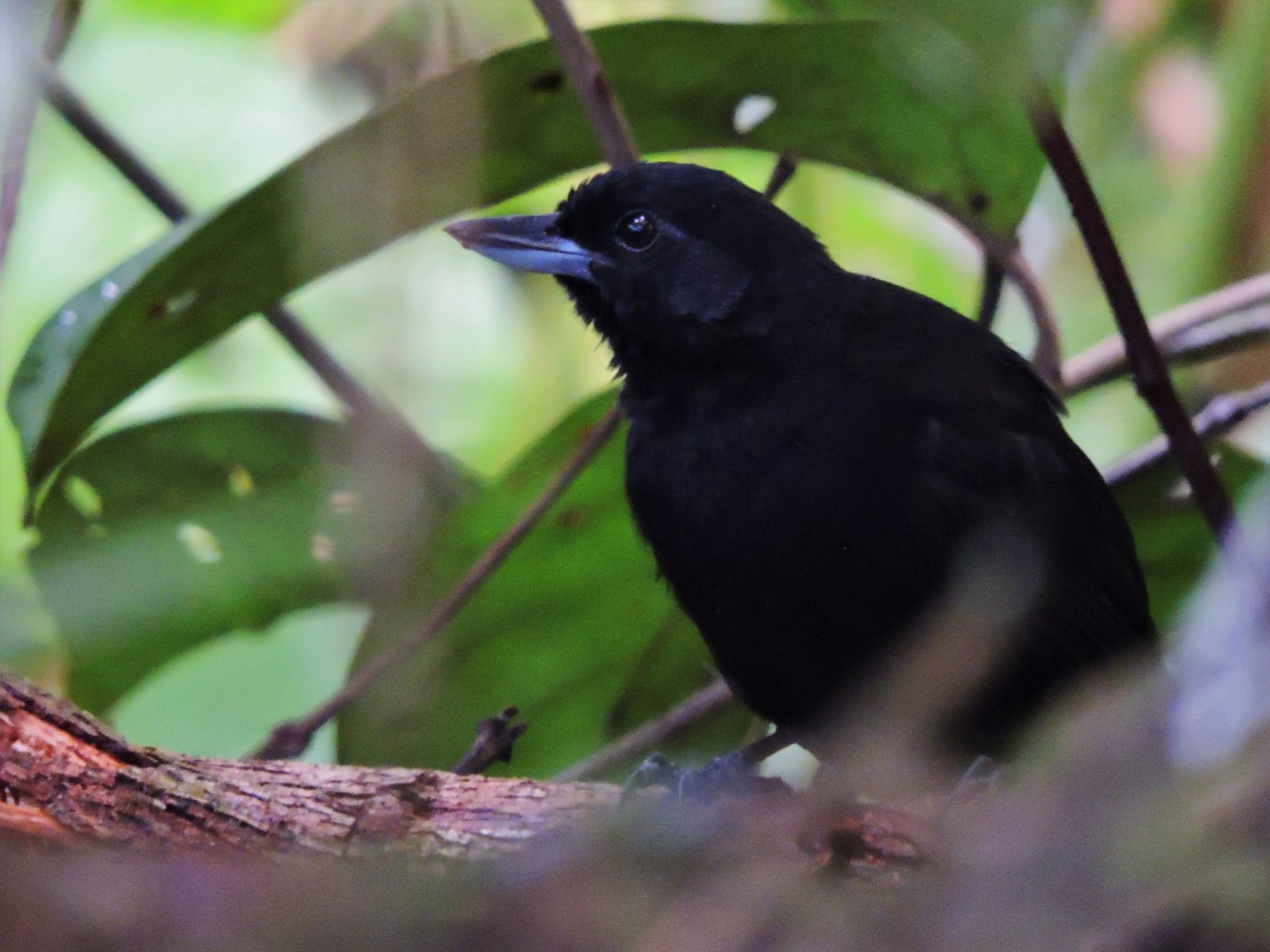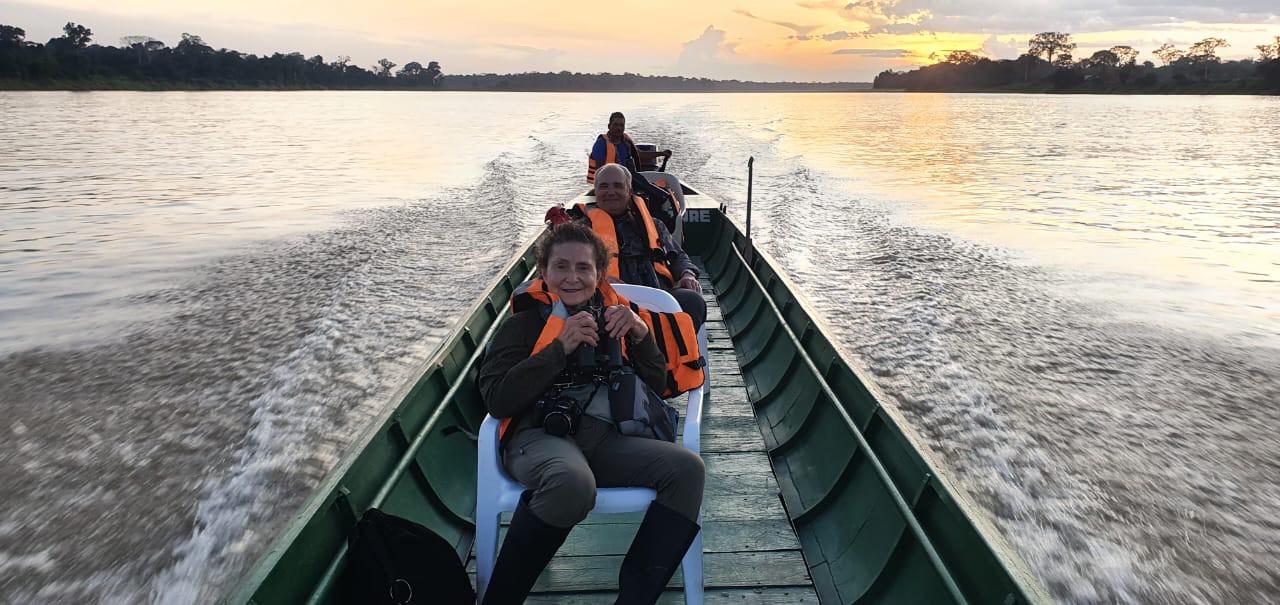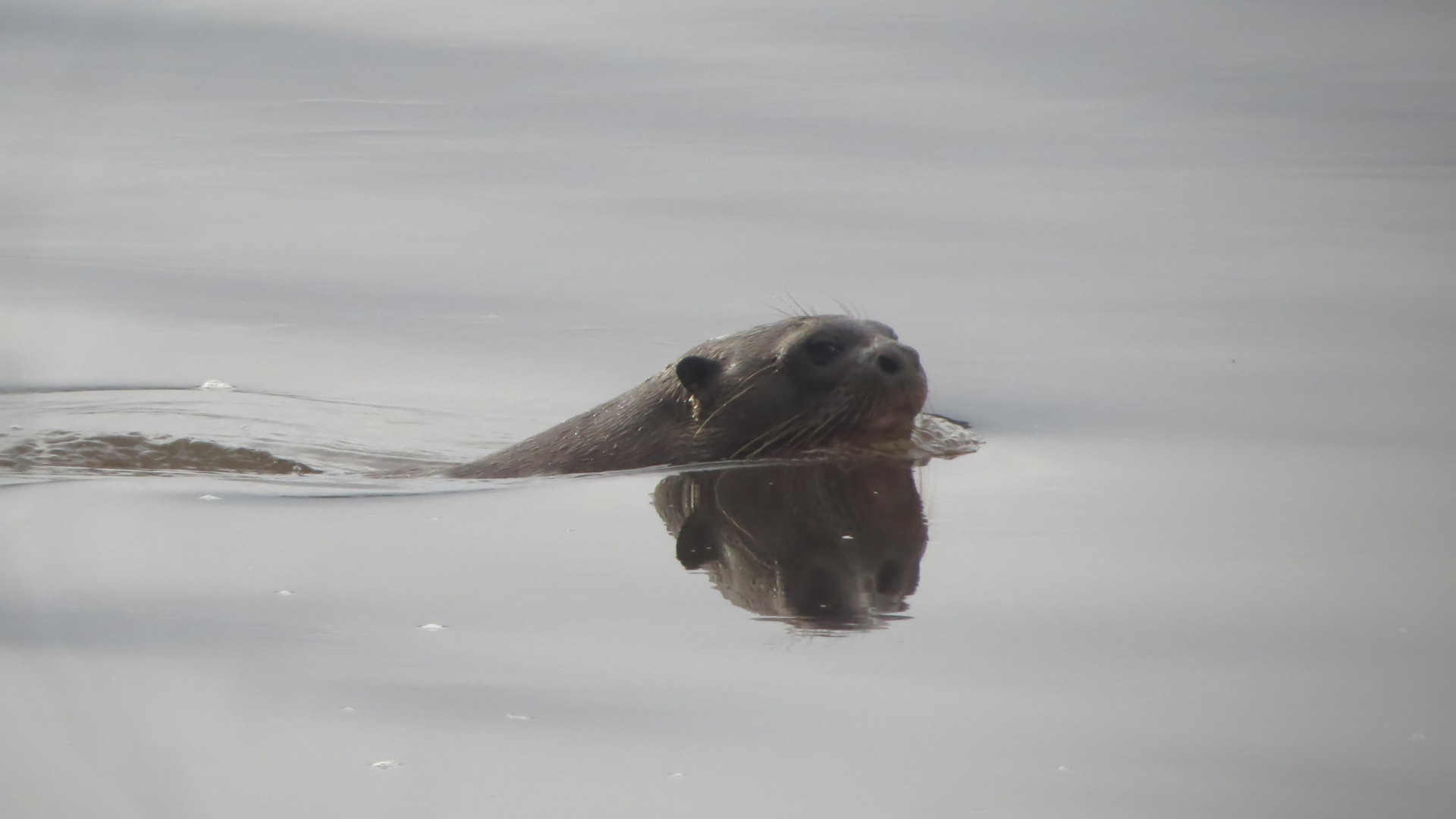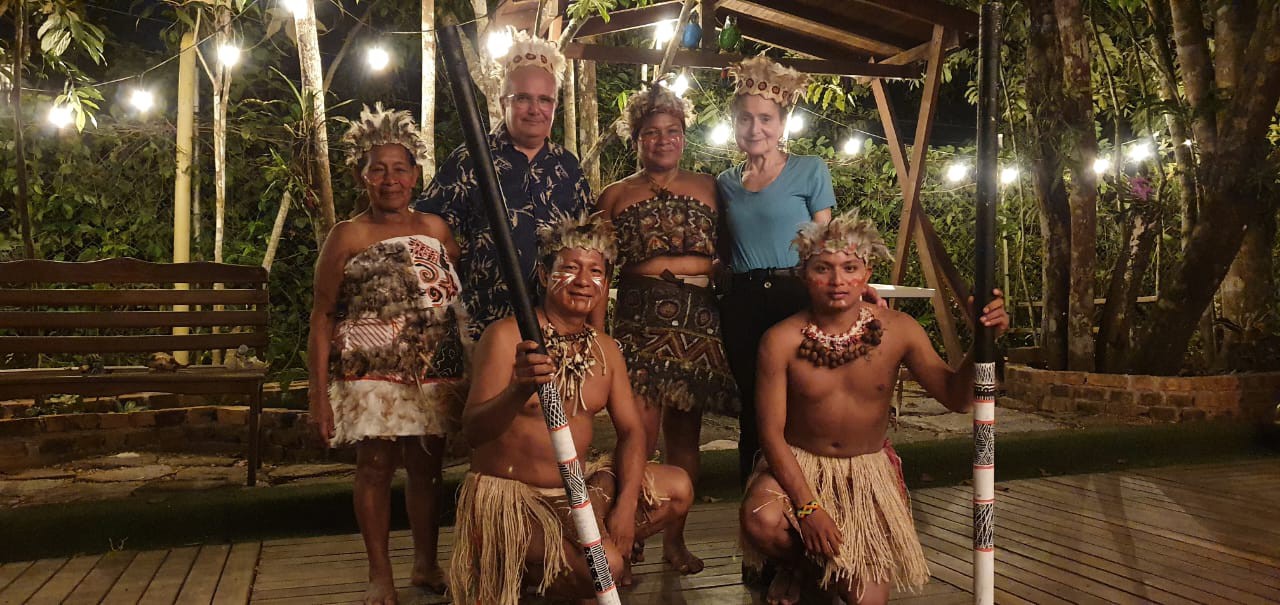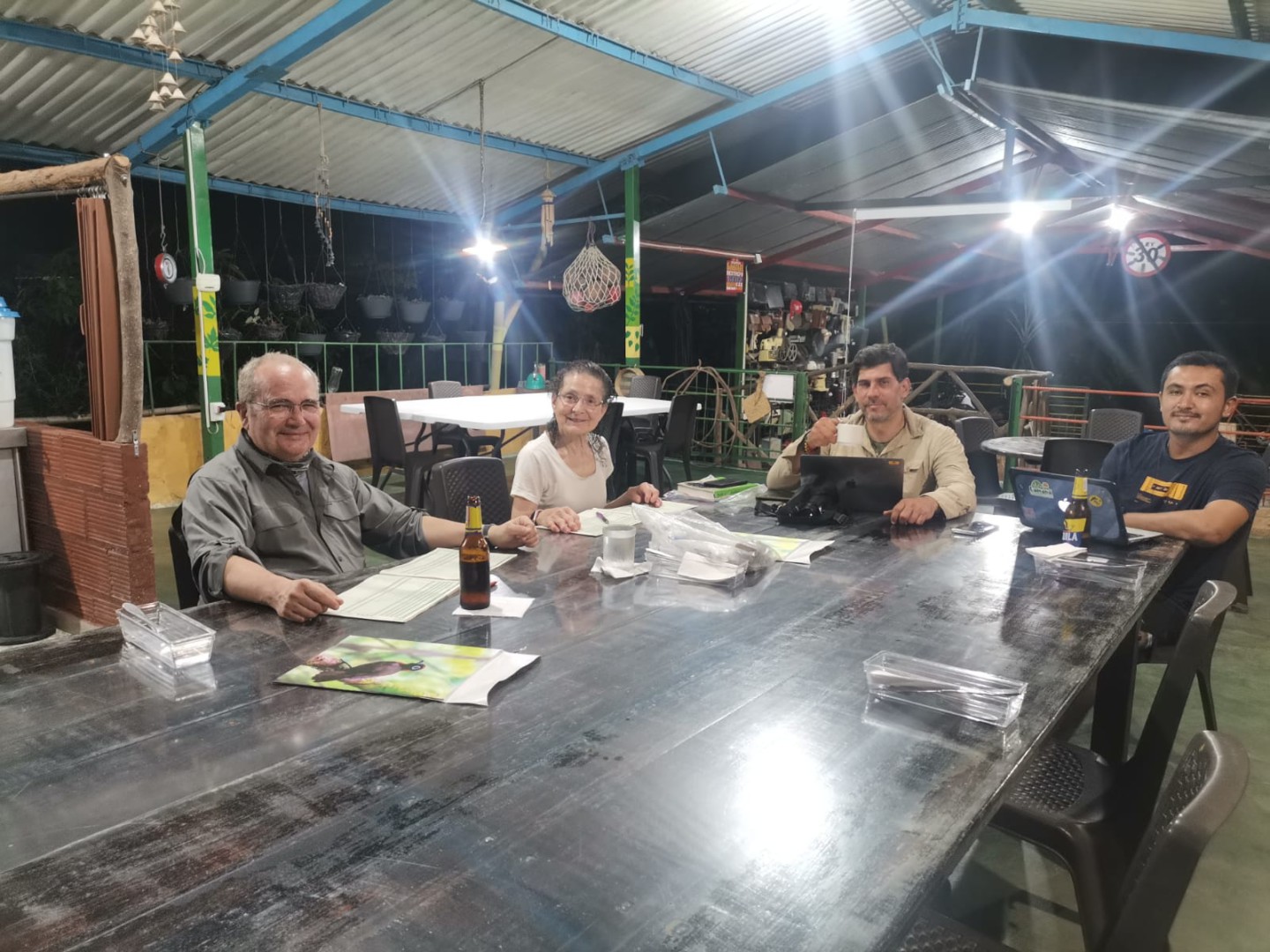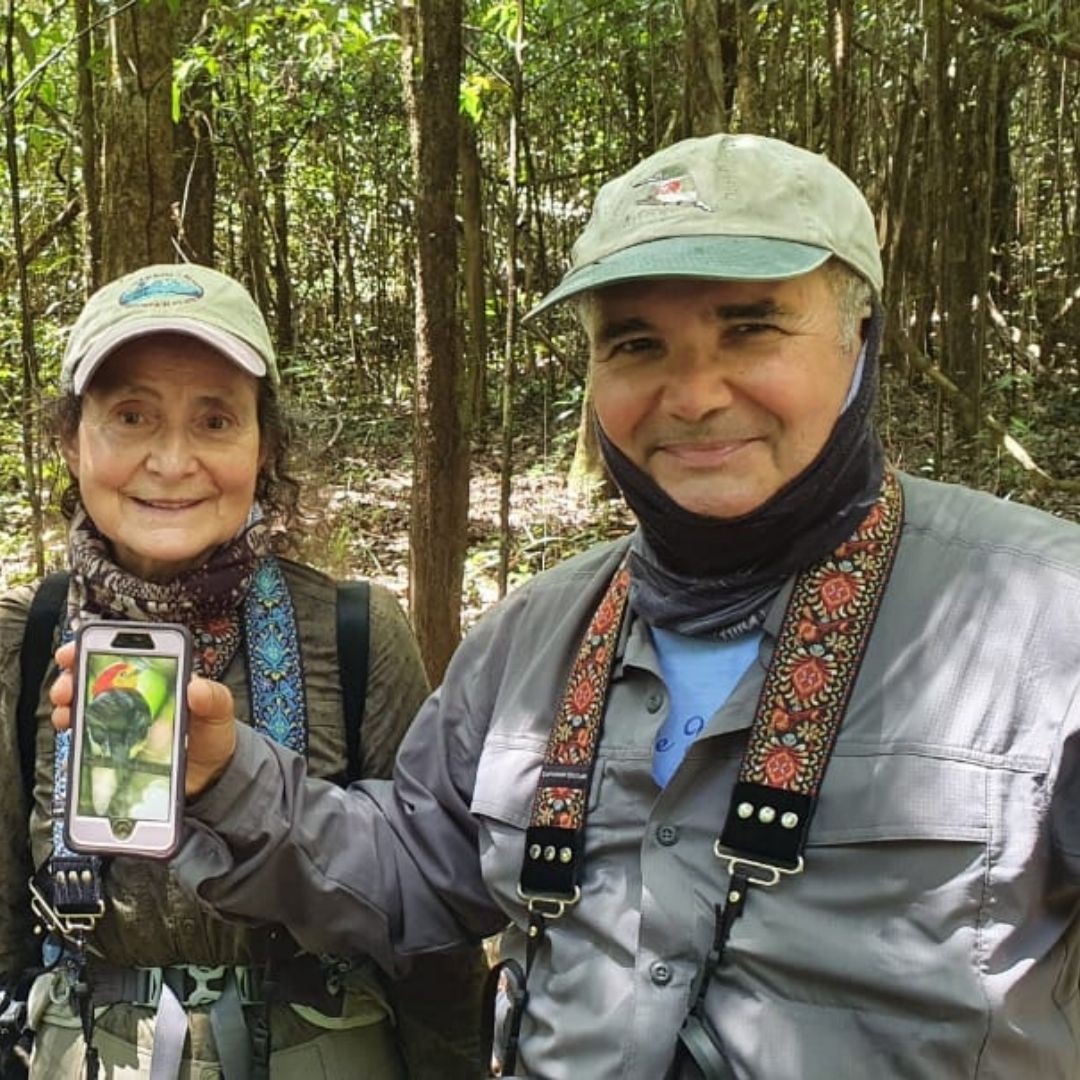
Trip Report – East Cordillera / Foothills & Amazon (Orinoco basin Inirida)
Day 1 / 3 – Santa Maria
The municipality of Santa María is located on the eastern side of the eastern mountain range in the Andes of Colombia, forming part of the Valle de Tenza, located in the south of the Boyacá state. Of the 2000 bird species registered in Colombia, about 400 have been registered in the municipality of Santa María. In addition, Santa María promotes the conservation of local birds through the Festival de las Aves de Santa María (Local Birding Festival), which takes place periodically in the month of September, click here to find out more!
This was the incredible region where we started our tour! In ecosystem transitions we observe many important targets such as; Blue-necked Tanager, Burnished-buff Tanager (Rufous-crowned), Golden-naped Tanager, Slate-throated Redstart, Russet-backed Oropendola, Ochre-breasted Brushfinch, Orange-bellied Euphonia, Blue-naped Chlorophonia, Pale-breasted Thrush, Crested Spinetail, Black Phoebe, Violaceous Jay, Band-tailed Guan, Black-and-chestnut Eagle, Band-bellied Owl, Ferruginous Pygmy-Owl (heard), Black-and-white Owl, Amazonian Motmot, Purple Honeycreeper and Chestnut-vented Conebill.
Day 4 / 5 – Rancho Camaná
The Camaná Ranch Natural Reserve is an agro-ecologic farm with only 1.7 acres, due to the recuperation process taking place on the forest and the integration with fruity and specialized gardens, it has become a place of excellence for birdwatching in the municipality of Restrepo. The reserve has a registry of 183 species and some of them like the Turquoise Tanager frequently arrive to the feeders in the Ranch. It is also possible to observe a nocturnal primate, which is endemic to Colombia. Camana has sustainable lodging with hot water and provides food and rustic services of great quality. Where owner Martha Lopez and Nathalia Otero y Elvis, they make this place a paradise for birdwatchers. The days that we stay here we saw; Speckled Chachalaca, Whistling Heron, Little Blue Heron, Lettered Aracari, Violaceous Jay, Turquoise Tanager, Black-billed Thrush, Collared Forest-Falcon, Solitary Black Cacique, Burnished-buff Tanager, Rufous-fronted Thornbird, Gilded Barbet, Silver-beaked Tanager, White-winged Becard, Black-crowned Tityra, Tropical Screech-Owl, Stygian Owl, Little Cuckoo, Wood Stork, Green Ibis, Bare-faced Ibis, Scarlet Ibis, Masked Trogon, Moustached Puffbird, White-chested Puffbird (heard), Yellow-ridged Toucan, Chestnut-eared Araçari, Scaled Piculet, Yellow-tufted Woodpecker, Northern Little Woodpecker, Spectacled Parrotlet, Cobalt-winged Parakeet and many more.
Day 6 – Cundinamarca Antpitta
The antpitta family has 55 species in four genera: Grallaria, Hylopezus, Myrmothera and, Grallaricula. South America is the continent of the antpittas, where most species are found. They are most diverse in the Andes. Peru leads with 36 species. Colombia follows with 31 species and nine endemics. But this number may change as discoveries of new species are common in these mega-diverse countries. Watching this group is always exciting and exciting, because they are not so easy, and of course they are amazing birds.
And today was an unforgettable day, we achieved our main objective the AMAZING Cundinamarca Antpitta! The Cundinamarca Antpitta was described little more than a decade ago and is known from only a few locations on the east slope of the East Andes in Colombia, all of them reasonably close to the country’s capital, Bogotá. Given its small range and the degree of deforestation this region has suffered, the conservation status of Cundinamarca Antpitta originally was evaluated as Vulnerable, but continued threats to habitat and apparently declining populations have led its threat status to be revised to Endangered. Today was a great day!
Day 7 – Inírida
The municipality of Inírida is located in the Estrella Fluvial de Inírida, a place where three great rivers converge: the Guaviare river, the Atabapo river and the Inírida river, which flows to the great Orinoco river. A land of innumerable indigenous communities such as Curripaco, Puinave, Piapoco and many others that make this experience much more particular! The area is especially important for Manakin Nature Tours Staff. In 2020 Manakin NT acquired around 200 hectares of an area to establish an environmental reserve! A super beautiful project that involves the entire indigenous community for the conservation of the species! We will soon share more about our first project “Building the Biological Scientific Research Station”.
We leave Bogota early for Inírida, it takes approximately 2 hours to fly! We stayed at the hotel and went bird watching before lunch, however the weather was very hot! We went down to lunch and birding afternoon, after lunch and a short rest, we went to Caño Culebra to do a short birdwatching It was only a few hours however with excellent targets like Spotted Puffbird, Chestnut-fronted Macaw, Black Caracara and many others! But another special moment was to see the Yellow-handed Titi monkey that can be found in lowland forests around the Amazon, Orinoco, Maranon, and Guianas rivers in the northern part of their range, and south to the Puru river!
Day 8 – Sabanitas Indigenous Communities
For Manakin NT it is always important to promote communities for sustainable tourism, since we started operating in Inírida, we have identified the Sabanitas community as an excellent spot for birds and cultural exchange!
Sabanitas is an indigenous community with an average of 250 people living (60 families), they are an indigenous people of the Curripaco ethnic group!
And the day was really amazing!
Today one of the most special moments of the day was the Capuchinbird that was very fast but was a very happy moments for all of us! We almost saw it when a barking dog seared it away. We saw more birds like White-crowned Manakin, Screaming Piha, Pompadour Cotinga, Yellow-crowned Manakin, Golden-headed Manakin, Cherrie’s Antwren, Red-and-green Macaw, Orange-winged Parrot, Southern Mealy Amazon, Blue-headed Parrot, Brown Jacamar, Yellow-headed Caracara, Black Caracara, Green-backed Trogon, Green-and-rufous Kingfisher, Bronzy Jacamar, Swallow-winged Puffbird, Golden-spangled Piculet, Waved Woodpecker, White-flanked Antwren, Mouse-colored Antshrike, Plain-brown Woodcreeper, Amazonian Barred Woodcreeper, Striped Woodcreeper, Cinnamon-rumped Foliage-gleaner and many more.
After a long walk we return for lunch, the menu of the day! Pescado moqueado, a typical dish of the community, a fish (cooked by steam from a clay stove) what an incredible, delicious lunch!
Day 9 – Matraca Trail
Matraca Trail, is an amazing place for birds! Today our day started early and we crossed the Inírida river and birding in Matraca, it was an intense morning all the time we were observing different targets!
Some of today’s birds were; Amazonian Squirrel-cuckoo, Double-toothed Kite, Black-collared Hawk, Green-tailed Jacamar, Humboldt’s Araçari, Chestnut-crested Woodpecker, Black-headed Parrot, Blackish-grey Antshrike, Amazonian Umbrellabird, Spangled Cotinga, Piratic Flycatcher, Yellow-throated Flycatcher, Buff-breasted Wren, Opal-rumped Tanager, White-edged Tanager, Silver-beaked Tanager, Masked Crimson Tanager and many more.
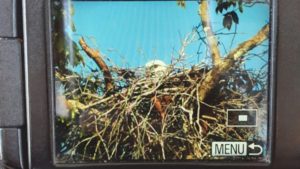 And in the afternoon we went to visit the nest of one of the most important raptor birds in the Neotropics. The Crested Eagle is a very large raptor of Neotropical forests. It is listed as a near threatened by the IUCN, occurs at very low densities and requires large areas of suitable habitat, and as a result is observed infrequently. The Crested Eagle builds quite a large nest. Their nest, built in the form of a huge platform, is made of sticks and is usually placed in the central fork of a large tree. It was very exciting to see the baby of this rare and endangered species!
And in the afternoon we went to visit the nest of one of the most important raptor birds in the Neotropics. The Crested Eagle is a very large raptor of Neotropical forests. It is listed as a near threatened by the IUCN, occurs at very low densities and requires large areas of suitable habitat, and as a result is observed infrequently. The Crested Eagle builds quite a large nest. Their nest, built in the form of a huge platform, is made of sticks and is usually placed in the central fork of a large tree. It was very exciting to see the baby of this rare and endangered species!
Today was a super fun day, in 2021 Manakin Nature Tours to organize a course to promote nature tourism and birdwatching in the region! Today we had the opportunity to invite two students from the course to accompany our activities, who shared these moments, thanks Brian Barrera and Lina Zuñiga we are so happy that you are learning more and more about the birds of Inírida!
Day 10 – Paujil
Today was an amazing day, we observed birds at Sendero EL PAUJÍL, an indigenous reserve, in less than 20 minutes on the boat we reached our observation point! It was a day that only on the Paujíl we were able to observe 76 targets, however all of them were very well observed, the birds were cooperating a lot with us today!
Some of today’s birds were; Amazonian Sunbittern, Sand-colored Nighthawk, Black-eared Fairy, Blue-tailed Emerald, Glittering-throated Emerald, Neotropic Cormorant, White-eared Jacamar, Many-banded Araçari, Gilded Barbet, Orinoco Piculet, Spot-breasted Woodpecker, Black Bushbird, Amazonian Streaked Antwren, Black-crested Antshrike, Dusky Antbird, Orinoco Softtail, Rusty-backed Spinetail, Yellow-chinned Spinetail, Plain-crowned Spinetail, Wire-tailed Manakin, Bare-necked Fruitcrow, Whiskered Flycatcher, Varzea Schiffornis, Amazonian Tyrannulet, Cinnamon Attila, Drab Water-tyrant, Golden-bellied Euphonia, Yellow-browed Sparrow, Crested Oropendola, Yellow-rumped Cacique, Velvet-fronted Grackle, Blackpoll Warbler, Amazonian Greyish Saltator, Chestnut-bellied Seedeater, Western Orange-headed Tanager.
During the afternoon we had one more important target, to register the new species of unnamed Antshrike in Colombia! An important record as studies indicate that it may be a new species, yet to be confirmed! With only a few sightings recorded, it’s definitely was the target of the day!
Day 11 – Orinoco River and Nature Reserve Morú
Orinoco River, major river of South America that flows in a giant arc for some 1,700 miles (2,740 km) from its source in the Guiana Highlands to its mouth on the Atlantic Ocean. Throughout most of its course it flows through Venezuela, except for a section that forms part of the frontier between Venezuela and Colombia.
Watching the birds in this region is a great experience, being able to observe the pink river dolphins, otters, monkeys during our navigation on the river!
In the Reserve Morú we saw: Ruddy Pigeon, Band-tailed Nighthawk, Spotted Sandpiper, Lesson’s Seedeater, Black Skimmer, Large-billed Tern, Swallow-tailed Kite, Grey Crane Hawk, Black-throated Trogon, Ringed Kingfisher, Chestnut-capped Puffbird, Cuvier’s Toucan (heard), Grey Antwren, Imeri Warbling-antbird, Buff-throated Woodcreeper, Grey-capped Flycatcher, Orange-bellied Euphonia, Moriche Oriole.
Day 12 – Mavecure Hills
Today is a day of birding and relax time. We left the hotel a little later and headed to the Cerros de Mavecure, in above of 1/2hrs in a speedboat! The landscape on the Inírida River is impressive, when arriving at Cerros we can see the dimension, a magical place. The set consists of three hills: Pajarito, Mono and Mavicure (170, 480 and 712 meters high, respectively), a day to contemplate the nature of this magical place! And of course we took the opportunity to do some birding and increase our bird list for the trip, with some targets like Orinoco Piculet, Orange-breasted Falcon, Black-collared Swallow, Great-billed Hermit, Green-tailed Goldenthroat, Glittering-throated Emerald.
And during the night, we had a cultural presentation of the indigenous community! And so we ended our journey! It was great days searching for birds in this part of the country!
At the end of the tour we observed 321 species!
Top 5 Birds to Roxane and Richard in this trip
– Wire-tailed Manakin
– Black-and-chestnut Eagle
– Black-throated Trogon
– Crested Eagle
– Black Bushbird
Thank you Roxane Larouche and Richard Albano, for this opportunity to guide you! Was a great birding tour!
We need your donation to help us to SAVE THE HARPY EAGLE!
We have two options to donate (click on the image)
or

